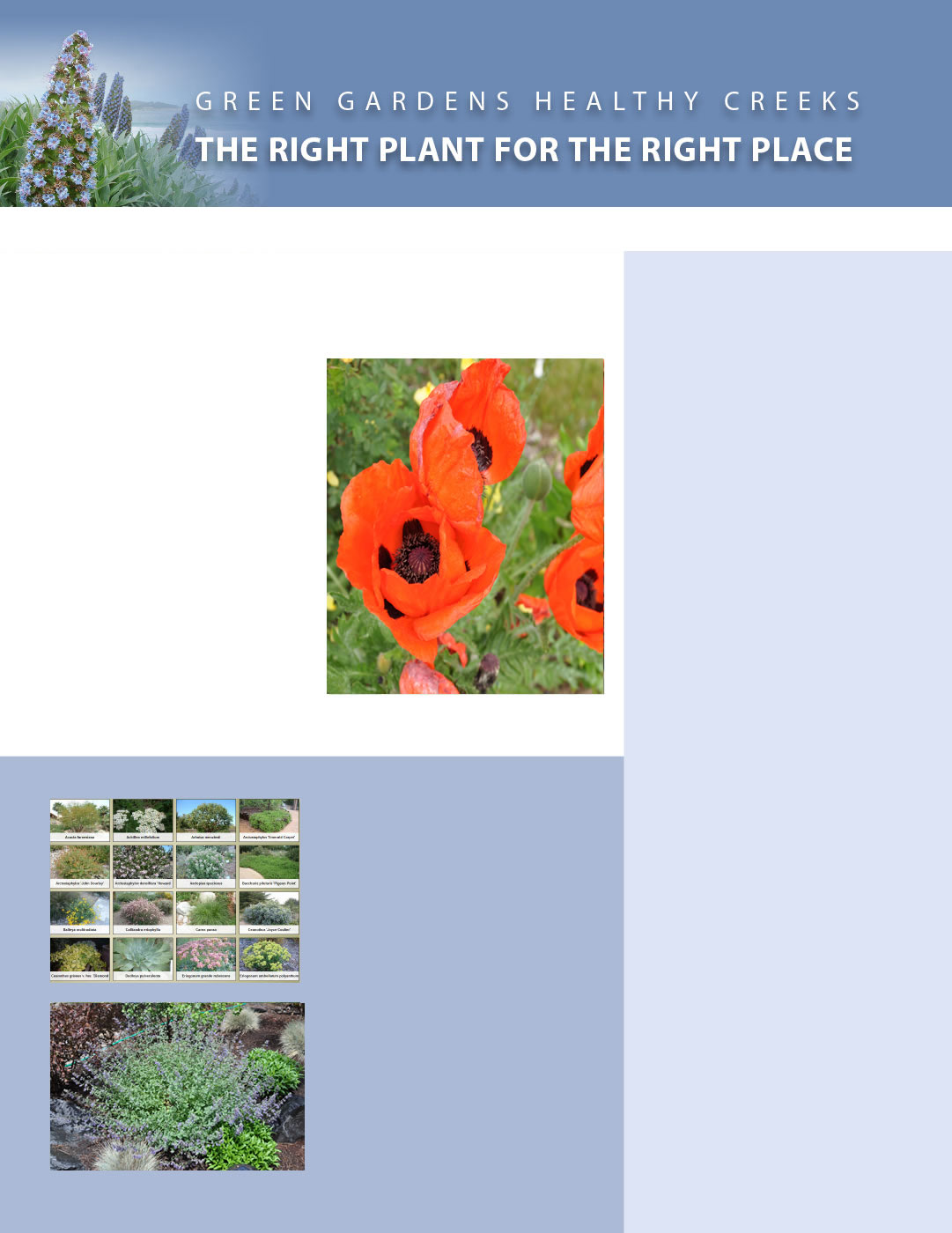
If you plant a shade plant in full sun, it will require a huge amount of water to survive, if it will survive at all. If you plant a sun plant in the shade, it will be spindly and weak. You will need to water groups of plants together on the same irrigation valve. You do not want to place heavy water-needing plants with those that need very little.
Putting the right plants in the right places in the right groupings is both the challenge and art of good landscape design. Pesticides and fertilizers are not needed, protecting the environment and your health and saving you time and money.
Diverse plantings limit the spread of diseases by creating buffers between susceptible plants, attract beneficial insects to control pests, flower successively through much of the year and may also offer food and shelter to wildlife.
Plant Placement
A plant may be in the wrong place if it does not thrive, outgrows its space, or is prone to diseases and insect pests. The best solution is to replace the plant with one better suited to the site.
Don’t be alarmed if you make a mistake. Mistakes are a natural part of gardening. In some ways, ornamental landscape design is really just a big experimental process with Mother Nature holding all the secrets.
Do your best to match the sun, soil and water requirements of a particular site with those of the plants. If the plant falters, don’t be afraid to try and transplant it to another part of the garden for experiment number two.
Sun, Soil, and Water Requirements
The key to getting the right plant in the right place has to do with matching the sun, soil and water conditions a plant needs, to the home environment you have. There are many micro-climates around your home.
There are places protected from the sun by your home or walls. There are places where your soil is richer than in other places (think raised planters with all new soil) and there are places where water is more available than in other places (the edge of lawn areas that get irrigated more frequently than other areas of the garden, for example).
Most plants at nurseries will post the sun, soil and water requirements of a plant on the label. If not, here is one helpful hint. At the nursery, the shade plants are put under cover of some sort and the sun plants are out in the open.
The best thing to do is talk to the nursery professional about what it is you need, and where to plant what you like.
Hydrozoning
Try to put plants together that have the same water needs. This is called hydrozoning. Since you have to divide your irrigation system into zones it is best to group plants according to their water needs.
If you have just one high water-needing plant mixed in with low water-needing ones, you are forced to water everything more than the majority of plants need. This leads to water wastage. Check the nursery labels for water requirements.
You can look up the plants by name on this web site to discover their hydrozone. Collect plants into your private list and use the hydrozone report to divide them for you.
